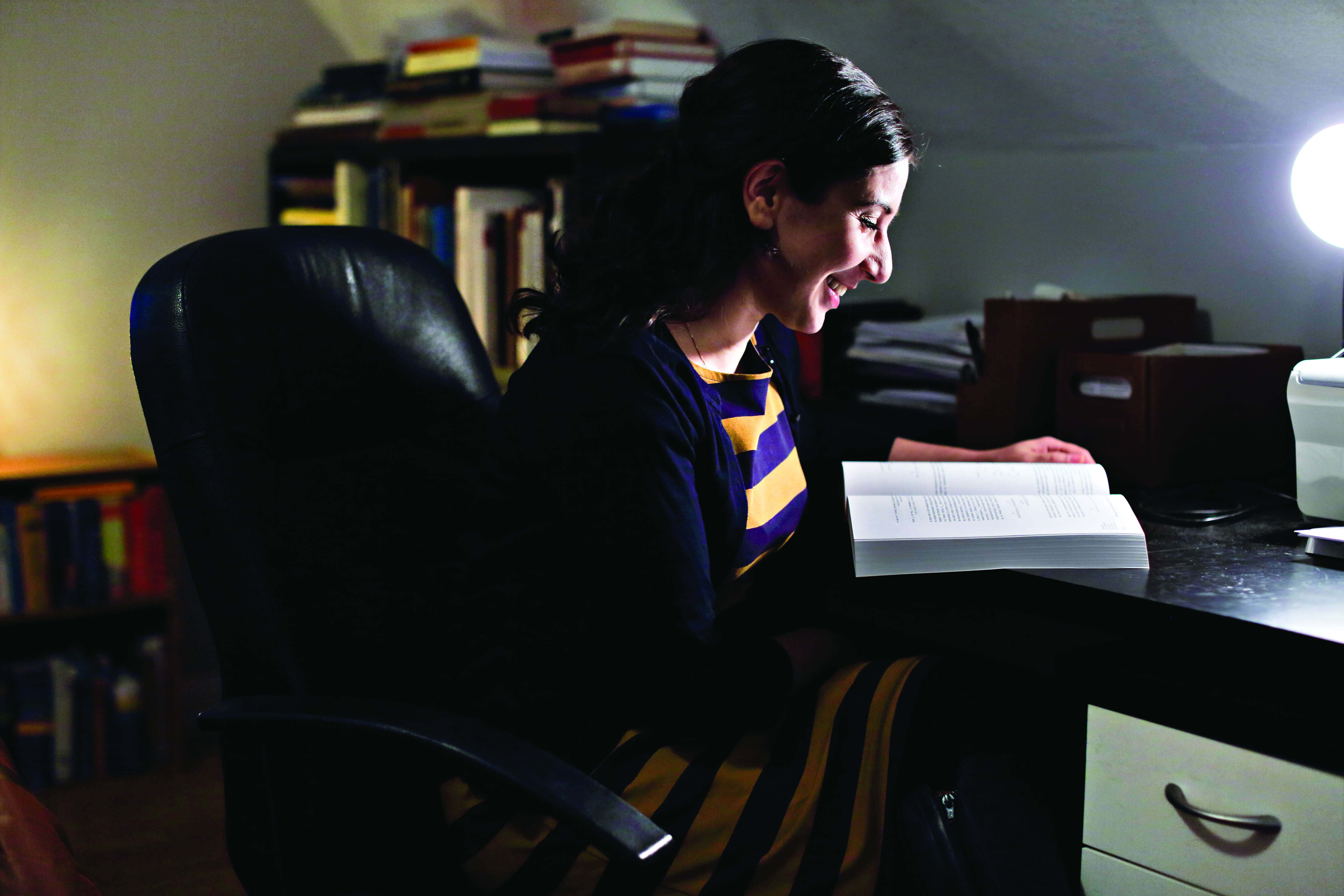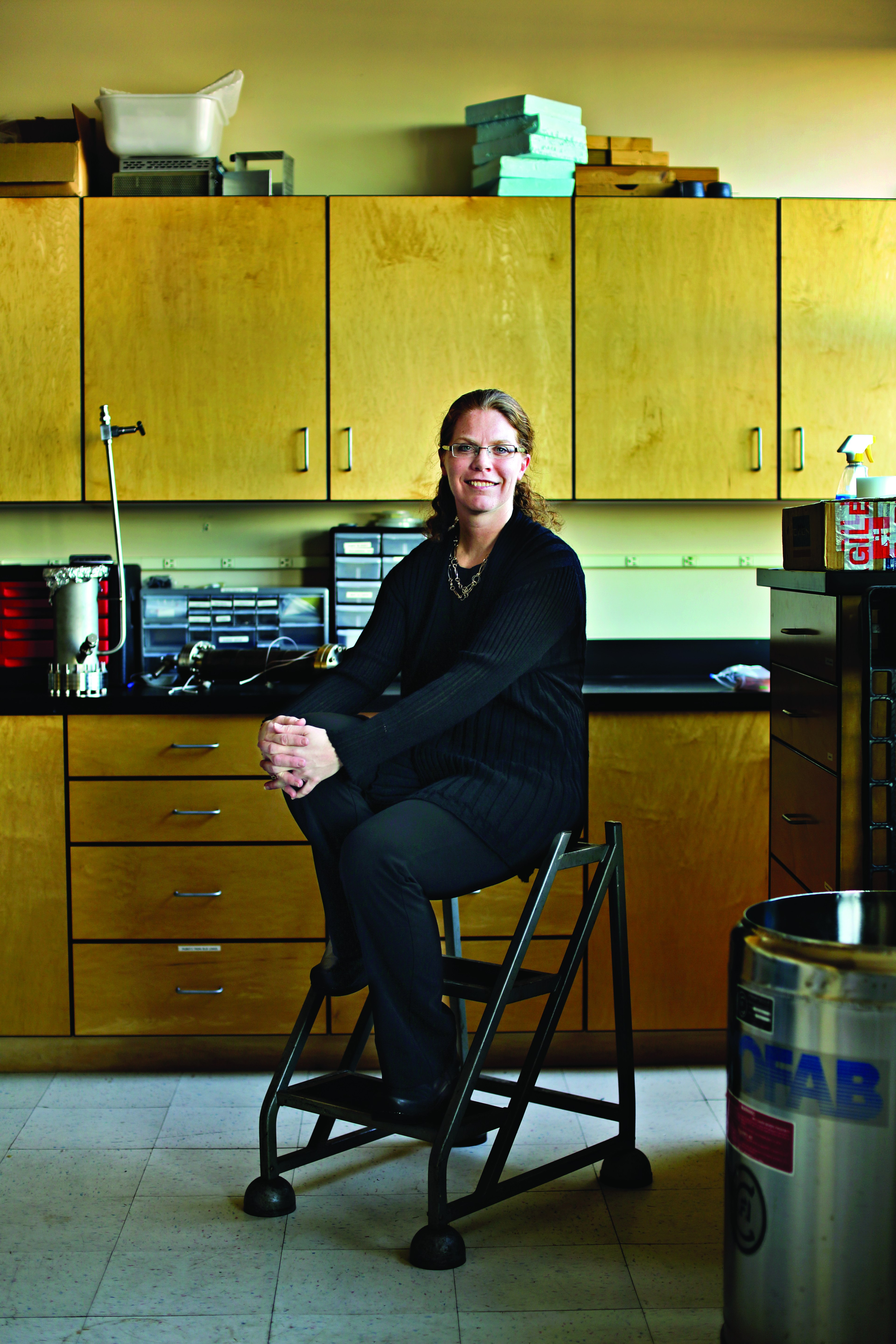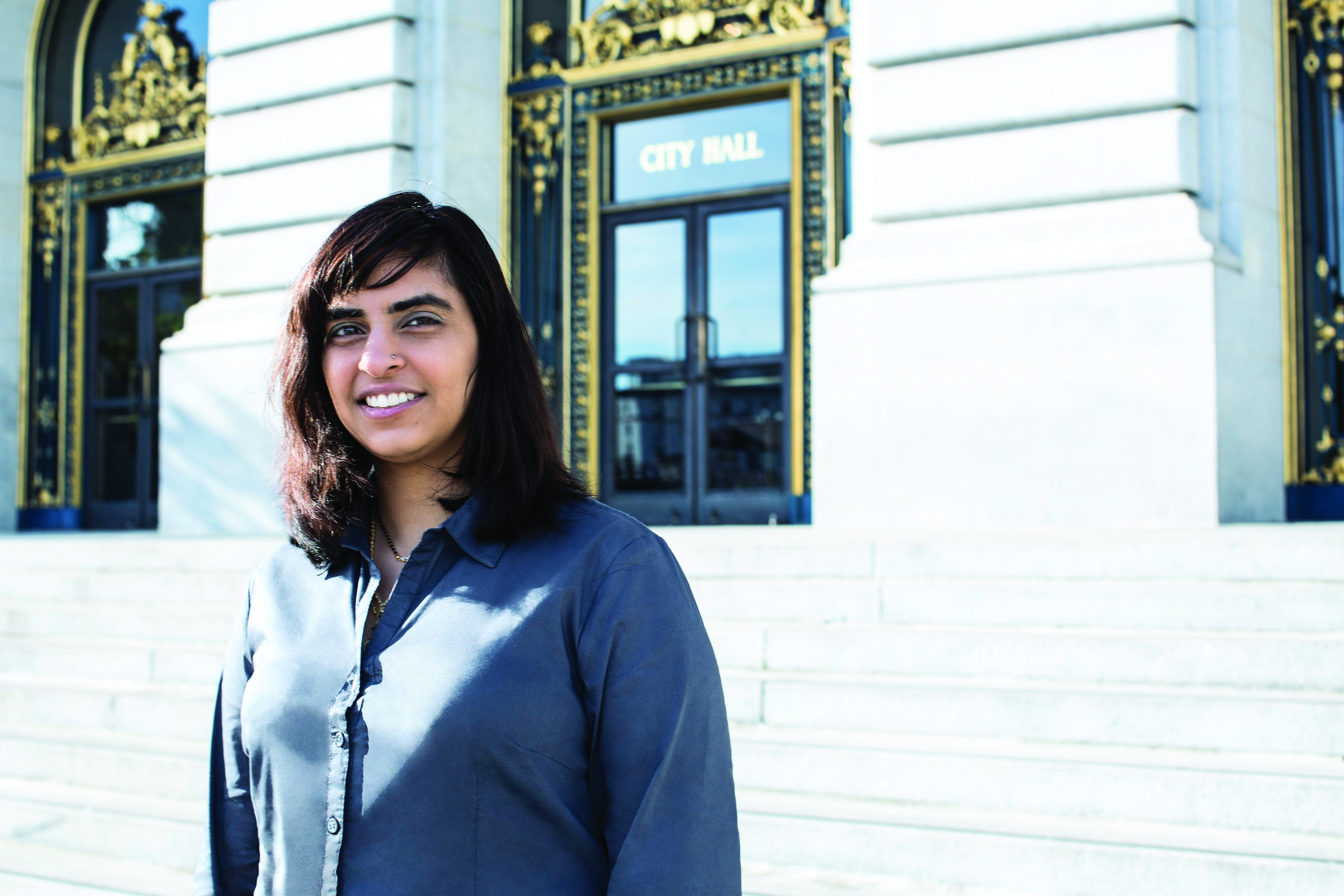Throughout the years, Barnard women have studied such sciences as astronomy, biology, chemistry, and physics, pursuing careers in these fields. Many of these women were pioneers, establishing their places within scientific communities that were all but closed to them. On the following pages, six alumnae, two of whom are retired, talk about their research, how they started, and what inspired them.

Janna Levin ’88
ASTROPHYSICIST
“I came to science late,” says astrophysicist, writer, and Barnard associate professor Janna Levin ’88. She had been studying philosophy when she discovered a passion for a more tangible field of study. “It was the universality of math that was appealing,” she says. “Math was still true, and that was fascinating.” Today, Levin splits her time among a range of passions. She is a professor of physics and astronomy, a scientist studying black holes, an award-winning author of two books, including the novel A Madman Dreams of Turing Machines, and a mother. She enjoys them all. “We’re too accustomed to having small identities,” she says, noting that her writing and her research never compete with each other except in terms of hours in the day. “They are very different experiences,” she affirms. This spring, Levin will be on sabbatical at the California Institute of Technology, continuing to study what happens when black holes collide, and recording the sounds the universe makes when space starts to fumble and vibrate.

Elnaz Menhaji-Klotz ’02
Medicinal chemist
Elnaz Menhaji-Klotz doesn’t have the kind of career that can be left at the office—or the lab. Her role as a principal scientist at Pfizer Inc. in Cambridge, Mass., means she works long hours with biologists and researchers to create compounds that could end up as new medicines to treat cardiovascular and metabolic disorders such as heart disease and diabetes. The compounds that prove successful in initial tests go on to the clinical-trial phase. At Barnard, Menhaji-Klotz was drawn to organic chemistry, which she continued to study at Yale, earning a PhD in the field. “It’s all about concepts,” she says. “I didn’t feel like I had to memorize things. We faced problems like, ‘Here’s a molecule. How do you make this?’ That’s what I do now.” Today she applies those concepts to research that’s both challenging and fulfilling. “The potential rewards are so huge,” Menhaji-Klotz says. “I love it. This work can have such a great impact on human lives.”

Bonnie Fleming ’93
PARTICLE PHYSICIST
Bonnie Tamminga Fleming sees her work as fundamental: “Particle physicists work to break the world down into the smallest building blocks.” After graduating from Barnard, Fleming spent three years as a beam operator on a particle accelerator at Brookhaven National Laboratory in Upton, N.Y. “The concept of smashing particles open to learn more about the universe attracted me to particle physics,” she says. Fleming returned to Columbia University for her PhD, and now heads an experimental-research group at Yale University focusing on high-energy neutrino physics. Fleming partners with Fermilab outside Chicago, where she works on experiments that often involve hundreds of scientists from institutions around the world over the course of many years. “In all of these experiments, we’re working to discover new properties of neutrinos and understand what they can tell us about the universe,” she says.

Archna Patel ’03
DNA ANALYST
Archna Patel is only half joking when she says that watching CSI led her to a career as a DNA analyst. As a student, she loved law but not the prospect of life in a courtroom. She also relished studying chemistry, and understanding how explosions occur from the simplest actions; the tiny details capable of producing such large consequences fascinated Patel. “On CSI, they found connections between the smallest of things, and that solved the crimes.” Patel now works as a criminalist in California’s state department of justice in the San Francisco area, where she maintains a database of DNA samples. “You’re given only a number of a sample” without any accompanying identifying information, she says of the cases that come into her lab. Her job is to look for DNA matches. “[Ultimately] when you find out the details of a specific case you’ve worked on, say, the murder of a child, you feel you’ve helped bring justice and closure to that family.”

Kaitlin Kratter ’05
ASTROPHYSICIST
“When I got to college, I wasn’t sure what I wanted to do,” says astrophysicist Kaitlin Kratter. But during her first year at Barnard, she took two science courses. Then she heard about a summer research internship at the American Museum of Natural History. She got the internship—and it changed her career trajectory forever. Kratter spent two summers working at the museum. She completed her senior thesis project there, modeling the sensitivity of an instrument that images planets around distant stars; the device was developed by astrophysicist and American Museum of Natural History curator Ben Oppenheimer. Her early research was illuminating. “At the museum, I really got a sense of what a career in astrophysics would look like,” she says. Now a Hubble Fellow at the University of Colorado-Boulder, Kratter researches binary-star systems and studies what happens to a planet’s orbit when it circles two stars. Her work made headlines last summer when she co-authored an analysis on the irregular orbits of Pluto’s newly discovered moons.

Susan Schwartz-Giblin ’59 & Marian Meyers ’59
NEUROSCIENTIST & BIOCHEMIST
Susan Schwartz-Giblin planned to teach high-school science after graduation. Her mentor, biology professor Ingrith Deyrup, had another idea. “You’re going to graduate school,” Deyrup told her, and helped make it happen. Schwartz-Giblin earned a PhD in physiology from Albert Einstein College of Medicine. She built a distinguished career as a researcher and professor, serving for 11 years as dean at SUNY Downstate Medical Center. Schwartz-Giblin views mentorship as a most important responsibility. She counsels career-minded women: You don’t have to choose between work and family. “There is no right time to have children—you make time. If the only women who had children were those with free time, it wouldn’t be a very interesting world.”
“When I was 12, I knew that I wanted to be a scientist,” says Marian Bennett Meyers, co-president of her class with Schwartz-Giblin. Her high-school chemistry teacher let her spend hours in the school’s lab each week. When she entered Barnard, she’d already decided to pursue a career in chemistry. “Barnard taught women scientists, and invested in labs, teachers, and equipment at a time when women were not readily accepted as scientists,” she says. With a PhD in biochemistry from Cornell, Meyers joined a lab at Memorial Sloan-Kettering Cancer Center, researching cancer-drug resistance. She discovered sorcin, a previously unknown calcium-binding protein, and subsequently discovered that sorcin also plays a role in cardiac function. “In the future, this information may help improve the treatment of heart disease and increase our knowledge of calcium’s function in cell biology,” Meyers says.
Active volunteers on behalf of Barnard, both Schwartz-Giblin and Meyers have joined forces to underscore the need for science majors by encouraging alumnae support for scholarships.
